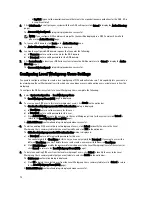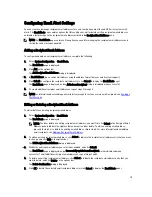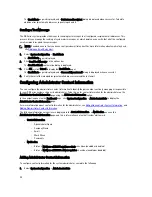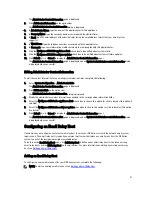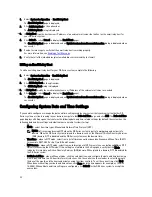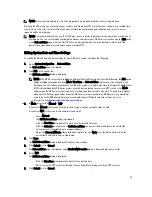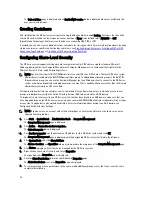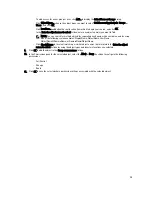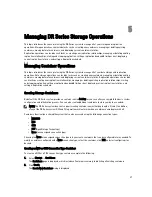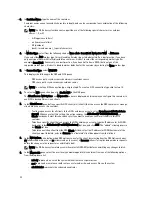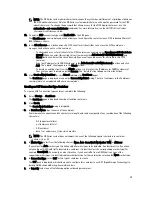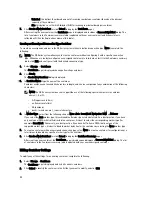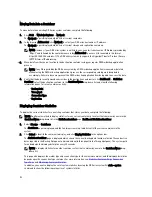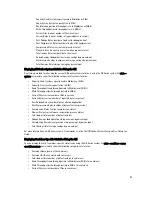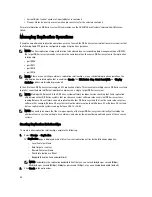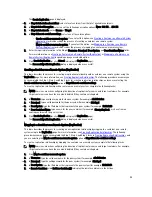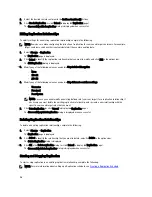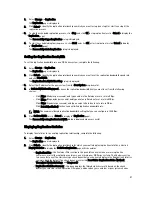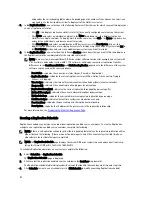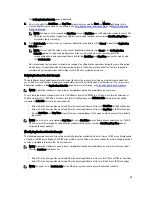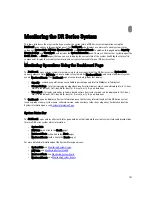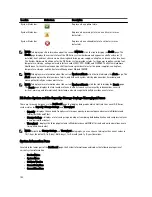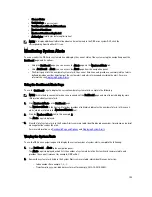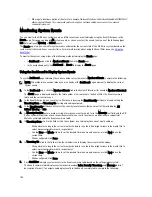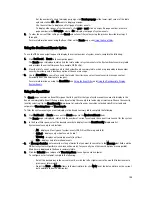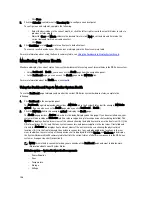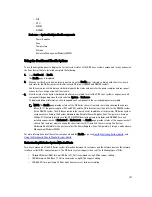
Moving Data into a Container
To move data into an existing DR Series system container, complete the following:
1.
Click Start
→
Windows Explorer
→
Network .
The Network page is displayed, which lists all current computers.
2.
In the browser Address bar, click Network to select your DR Series hostname or IP address.
The Network page is displayed, which lists all current storage and replication containers.
NOTE: However, if your DR Series system is not listed, you can enter its hostname or IP Address preceded by
"https://" and followed by the container name in the Address bar to access it (for example in this format,
https://10.10.20.20/container-1). The DR Series system only supports the Hypertext Transfer Protocol Secure
(HTTPS) form of IP addressing.
3.
Move data from the source location to the destination container using your regular DMA or backup application
process.
NOTE: If any file ingested by the DR Series system by a DMA or backup application is renamed or deleted
without using the DMA or backup application’s process, the corresponding catalog must be updated
accordingly. Failure to do so may prevent the DMA or backup application from being able to access the data.
4.
Verify that the data recently moved now resides in the destination container (or click Dashboard
→
Statistics:
Container, select the destination container in the Container Name drop-down list, and view the following
information panes for recent container activity:
– Backup Data
– Throughput
– Connection Type
– Replication
Displaying Container Statistics
To display the current statistics for an existing container that stores your data, complete the following:
NOTE: An alternate method to display statistics for any current container is to select that container by name in the
Container Name drop-down list in the Statistics: Container page (Dashboard Statistics: Container).
1.
Select Storage
→
Containers.
The Containers page is displayed, and the Containers summary table lists all of the current containers in the
system.
2.
Click Select to identify the container to display, and click Display Statistics in the options bar.
The Statistics: Container page is displayed which shows the current backup data (number of active files and active
bytes ingested in the Backup Data pane), and read and write throughput (in the Throughput pane). The system polls
for and updates the displayed statistics every 30 seconds.
NOTE: To display statistics for another container, select that container by name in the Container Name drop-
down list.
This page also displays the marker type and connection type for the selected container, and the displayed statistics
depends upon the connection type container. For more information, see
Statistics: Container Page
,
Connection
Type Pane
, and
Monitoring Container Statistics
.
In addition, you can also display the set of system statistics by using the DR Series system CLI stats --system
command to show the following categories of system statistics:
92
Summary of Contents for PowerVault DX6112
Page 1: ...Dell DR Series System Administrator Guide ...
Page 32: ...32 ...
Page 70: ...70 ...
Page 86: ...86 ...
Page 100: ...For more information on Replication schedules see Creating a Replication Schedule 100 ...
Page 114: ...114 ...

